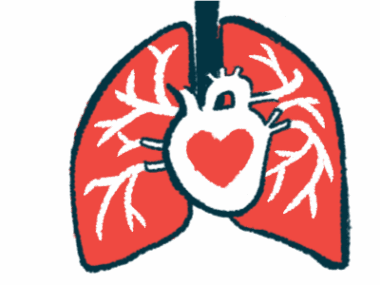New Fabry mutation leads researchers to connect 2 strangers
Genetic finding helps map family members’ symptoms
Written by |

A new mutation in the GLA gene was identified as the cause of Fabry disease in two people who turned out to be members of the same family in Spain, a discovery that allowed researchers to analyze the family tree and track how the disease was inherited.
They found that some members who carried the new mutation developed Fabry symptoms to varying degrees of severity, while others did not.
The study, “Fabry disease: Importance of genetic counseling in the reclassification of variants of uncertain clinical significance,” was published in Medicina Clínica.
Fabry disease is caused by inherited mutations in the GLA gene, which are passed down from a parent to a child in an X-linked dominant manner. This typically means that the child only needs to inherit one mutated copy of GLA on a single X chromosome for Fabry disease to manifest.
GLA mutations result in a deficiency of the alpha-galactosidase A (alpha-Gal A) enzyme, leading to the toxic buildup of fatty molecules, such as globotriaosylceramide (Gb3), within cells, which damages organs, including the heart, lungs, skin, gastrointestinal tract, kidneys, nervous system, and eyes.
Some mutations result in low or absent enzyme activity, causing classic Fabry, a more severe form of the condition that typically develops in childhood or adolescence. Most patients retain some alpha-Gal A activity, resulting in late-onset Fabry that emerges in adulthood. Even so, each person with Fabry experiences the disease differently, and the pattern of symptoms and affected organs can vary substantially.
Heart condition leads patients to seek genetic counseling
The researchers described the case of two older adults who carried the same GLA mutation, with no known familial relationship between them.
A 59-year-old man was referred for genetic counseling after receiving a diagnosis of unexplained hypertrophic cardiomyopathy, or a thickening of the heart muscle. He had a history of kidney disease, hearing loss in the left ear, and vision loss in the right eye.
Genetic testing revealed a GLA mutation, p.Gly116Val, classified as a variant of uncertain clinical significance — meaning that there was insufficient evidence to confirm it causes Fabry. Still, his low levels of alpha-Gal A and high levels of lyso-Gb were consistent with a Fabry diagnosis.
At the same time, a 69-year-old woman was referred for genetic counseling, also for hypertrophic cardiomyopathy. She carried the same p.Gly116Val mutation and had low levels of alpha-Gal A and high levels of lyso-Gb.
When the team examined the family tree, they discovered a familial relationship: The man was the woman’s half-nephew, the son of her woman’s half-sister. The discovery led the researchers to conduct a family segregation analysis, a genetic assessment method to understand how diseases are inherited within families.
The man’s son was unaffected. He was not genetically tested due to the X-linked inheritance pattern of the disease, which prevents it from being transmitted from father to son. That is, a father passes his Y chromosome, but not his X chromosome, to his son.
His daughter, however, who received one of her two X chromosomes from her father, was a carrier of the same GLA mutation. Her enzyme and lyso-Gb3 levels were outside the normal range, and she had cornea verticillata, a starburst-like pattern of cloudy areas on the surface of the eyes.
Two of the man’s four sisters and one of his two brothers, as well as some of their children, tested positive for the new GLA mutation.
A 57-year-old sister had hypertrophic cardiomyopathy, chronic kidney disease, and enzyme and lyso-Gb3 levels outside the normal range. While her two daughters were carriers of the GLA mutation and didn’t show overt Fabry symptoms, they had abnormal levels of alpha-Gal A activity and lyso-Gb3.
A 53-year-old sister had reduced enzyme levels and elevated lyso-Gb but was also asymptomatic.
Both her sons had abnormal blood tests. However, one showed corneal verticillata, and the other had hearing loss, migraine with aura, and right-sided occipital neuralgia, a headache disorder marked by sudden, sharp head pain.
His 48-year-old brother had undetectable alpha-Gal A activity and markedly elevated lyso-Gb3 levels, with possible brain involvement and cardiomyopathy.
In the other case, the 69-year-old woman reported that her daughter and granddaughter both carried the same GLA mutation. The granddaughter, who was diagnosed with Fabry at the age of 15, had cornea verticillata.
A 41-year-old nephew carried the same genetic variant and had hypertrophic cardiomyopathy, kidney involvement, damaged small blood vessels in the back of the eye, and low levels of alpha-Gal A and lyso-Gb3, consistent with a Fabry diagnosis.
Three of the woman’s siblings had died. One sister was still alive, but her genetic and clinical status was unknown.
All family members with a positive genetic test were referred for clinical assessment, monitoring, and treatment. The team noted significant Fabry involvement related to the heart, kidneys, eyes, and nerves in the family.
“The results obtained confirm that the segregation analysis is positive and, therefore, the variant described is responsible for the disease in the family,” the researchers wrote.






